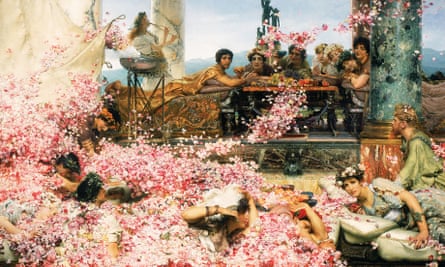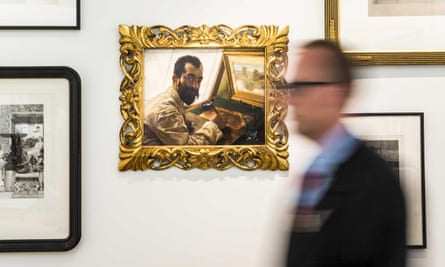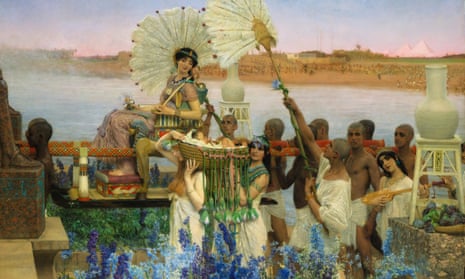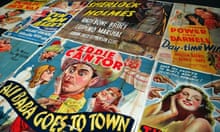The most expensive classical Victorian painting ever sold – The Finding of Moses, which inspired Cecil B DeMille’s biblical epic The Ten Commandments, the most expensive film ever at the time of its release in 1956 – is going on public display this week for the first time since the record-breaking auction in New York six years ago.
The appropriately epic exhibition of the work of Lawrence Alma-Tadema, famed for his paintings of ancient Egypt, Greece and Rome, and whose reputation was kept alive among filmmakers when his work fell out of fashion, is one of the largest ever held.
The show at the Fries Museum in the Netherlands also includes the first public view of a lost masterpiece that made international headlines when it resurfaced last month on the BBC’s Antiques Roadshow. The affectionate portrait of Alma-Tadema’s engraver, Leopold Löwenstam, was described as one of the best seen on the programme.

Both paintings will be included when the show comes next year to London, where the artist made his reputation and his fortune. The Finding of Moses has not been displayed in the UK for more than a century, and the portrait of Löwenstam, which had remained with the engraver’s descendants, has never been in a public exhibition.
The show opens in the artist’s native city of Leeuwarden, the capital of Friesland, which will take over the title of European capital of culture in 2018. The city’s spectacular new museum has an important collection of his work, including many donations from his family, but because so much of it was sold in the US and the UK, he is almost unknown there.
The London exhibition, from July 2017, will be in the studio home of his friend and fellow artist Lord Leighton, which is now a museum. Its spectacular Arab-inspired interiors were rivalled by the sumptuous London homes Alma-Tadema created with his second wife, the artist Laura Epps. They fell in love when she was 17 and he was 34. He settled permanently in London from 1870, and was knighted by Queen Victoria. The couple’s first home was destroyed when a barge full of sugar and gunpowder blew up on the nearby Regent’s canal – a scene of devastation recorded in a photograph – but they moved to an even larger house, where his agent grumbled that Alma-Tadema spent too much time on interior decorating rather than painting.
Even at the height of his fame, his temples, palaces and Roman maidens lolling on marble benches were not to every taste: the critic John Ruskin, a passionate advocate of the very different work of JMW Turner, described Alma-Tadema as “the worst painter of the 19th century”.
He died in 1912, and fell so out of fashion that in the 1960s The Finding of Moses was cut out and rolled up when a gallery could only find a buyer for the elaborate frame. But he was revered by generations of filmmakers and designers – the exhibition traces his influence from the first silent movies up to Ridley Scott’s 2000 film Gladiator. Scott’s production designer, Arthur Max, who attended the exhibition opening, recalled that the team worked with a sheaf of reproductions of Alma-Tadema paintings.

“His work has been dismissed as ‘Victorians in togas’ but younger scholars – and younger viewers – don’t bring that baggage to it and instead see his outstanding quality,” the co-curator, Peter Trippi, said. “It’s not all white marble in sunlight. The wealthy English and American buyers loved his work because they saw themselves as the new Romans – but they missed the fact that he also portrayed the darkness and corruption of that world.”
His auction prices had been rising steadily, but jaws dropped in 2010 when The Finding of Moses went for $35.9m (£22m) – seven times the highest pre-sale estimate – at a Sotheby’s sale in New York. It is believed to have been bought by an investment group but had not been seen since. “There’s no use putting the thumbscrews on us, we don’t know the identity of the owners ourselves – but we are absolutely delighted to have been able to include it,” the co-curator Elizabeth Prettejohn said.
Alma-Tadema was born in a small village just outside Leeuwarden, but was brought up and educated in the city, until he dropped out at 16 to become an artist. He has been completely overshadowed there by his fellow townsfolk – the exotic dancer and spy Mata Hari, and the artist MC Escher. Their houses are marked, and Mata Hari is commemorated with a small bronze statue showing one of her famous costumes of pearls and little else.
None of Alma-Tadema’s homes is marked, and Hans Dekker, a lecturer in tourism, was astonished to open his front door at the weekend to find the city’s mayor, Ferd Crone, on his doorstep trying out a new Alma-Tadema history trail now being created. “I had no idea, I am glad to know it,” Dekker said on learning that he lives in the artist’s earliest home in the city.
“Alma-Tadema has been a secret in the Netherlands,” Crone said, “but one we now hope to share with many people.”
Alma Tadema – Classical Charm is at the Fries Museum until 7 February 2017; the Belvedere Museum in Vienna from 23 February to 18 June; and the Leighton House Museum from 7 July to 29 October.








